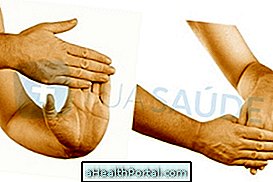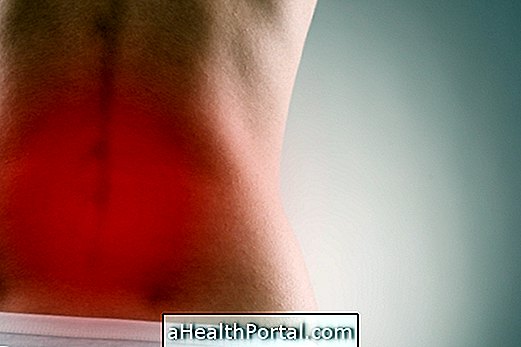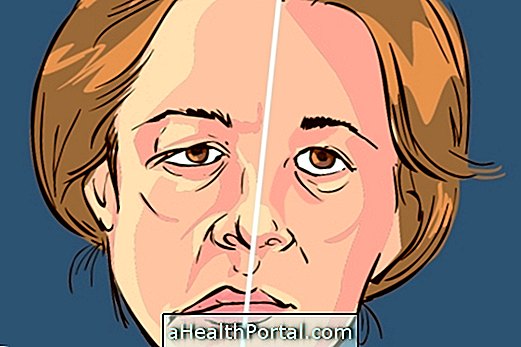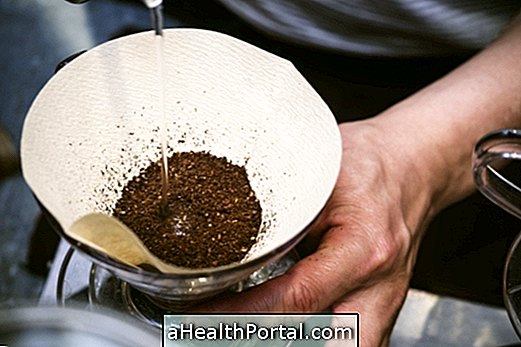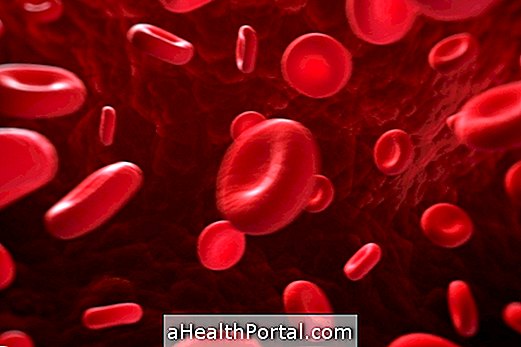The gluteus pain can be worrying when it is constant and makes it difficult to perform basic activities such as walking, shoeing or tying shoes.
The diagnosis of the cause of pain in the gluteus is made from the symptoms described by the person and from examinations that can be requested by the doctor, such as X-ray, MRI or CT scan.
Treatment is done with the goal of treating the cause, and it is usually recommended to stay at rest and put ice. In more severe cases, such as sciatic nerve pain, the doctor may indicate the use of anti-inflammatories or analgesics to relieve pain.

What can be pain in the gluteus
The gluteus pain may be constant, transient, throbbing or dull depending on the cause of the pain. The main causes of gluteus pain are:
1. Piriformis syndrome
Pyriform syndrome is a rare condition characterized by compression and inflammation of the sciatic nerve, causing pain in the buttocks and leg. The person with this syndrome can not walk straight, has a feeling of numbness in the buttock or leg and the pain worsens when sitting or crossing the legs.
What to do: When you notice the symptoms of this syndrome, it is important to see an orthopedist for the diagnosis and treatment can be started. Physical therapy is a great option to reduce pain and discomfort, and is usually recommended by your doctor. Here's how to identify and treat Piriformis syndrome.
2. Dead butt syndrome
The dead butt syndrome is caused by a lack of gluteal strengthening exercises, which leads to imbalance of muscle forces and inflammation in the gluteal tendon, resulting in intense stitch pain that arises when standing for long periods time, climbing stairs or sitting, for example.
What to do: The best way to treat this syndrome is through gluteal strengthening exercises, which should be done by appointment of a trained professional. It is also important to go to the orthopedist for the diagnosis and, depending on the intensity of the symptoms, to recommend the use of anti-inflammatories, such as Ibuprofen or Naproxen. Get to know the best exercises for dead butt syndrome.
3. Muscle pain
Gluteal pain may also occur after exhaustive lower limb workout, be it a run or a heavily loaded workout, for example, but may also occur due to injury to the tendons or posterior thigh muscles.
What to do: To relieve muscle aches, you should rest and put ice in the meeting to relieve the pain. If the pain is constant, it is important to consult a doctor so that the diagnosis can be made and the best treatment can be initiated.
4. Herniated disc
Lumbar disc herniation is characterized by difficulty in moving, lowering or walking, for example, in addition to sensation of pain and sensation of numbness in the glutes. Learn all about herniated disc.
What to do: It is important to consult an orthopedist for the diagnosis and treatment can be started. It is usually recommended to use anti-inflammatories and analgesics, which should be used according to medical guidance, in addition to physical therapy sessions.
When to go to the doctor
It is advised to go to the doctor when the gluteus pain becomes constant, there is pain even at rest and the person can not perform basic activities, such as walking or putting on a sock, for example.
In addition, it is important to see your doctor when:
- Swollen gluteus is noted;
- The gluteus is dormant or very sensitive to touch;
- There is burning sensation in the gluteus;
- The pain spreads to the legs, groin, back or abdomen;
- There is difficulty in lowering, shoeing and walking.
From the analysis of the symptoms described by the person and from imaging tests, the doctor can complete the diagnosis and indicate the best form of treatment.

